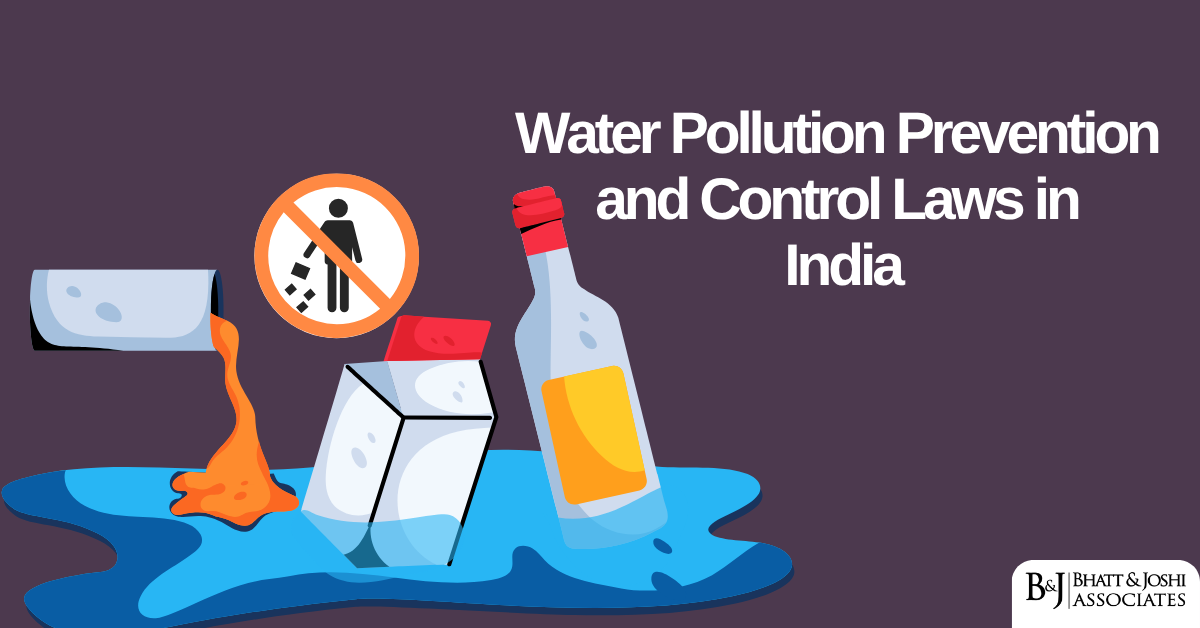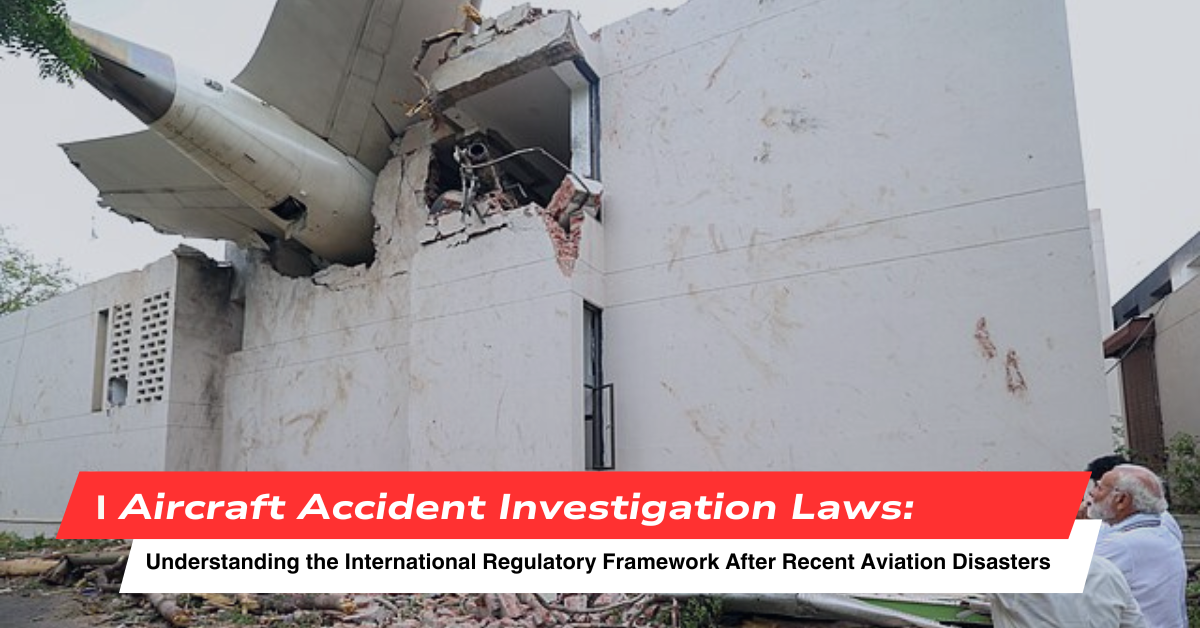Introduction
Water pollution has emerged as one of India’s most pressing environmental challenges, threatening public health, aquatic ecosystems, and sustainable development. The constitutional framework of India recognizes the paramount importance of environmental protection through both fundamental duties and directive principles. [1] Article 51-A(g) of the Constitution mandates every citizen to protect and improve the natural environment, including forests, lakes, rivers, and wildlife, while Article 48-A directs the State to endeavor to protect and improve the environment and safeguard the forests and wildlife of the country. This constitutional foundation has given birth to a robust legislative framework designed to combat water pollution through comprehensive regulatory mechanisms and institutional structures.
The evolution of India’s water pollution control laws represents a systematic response to growing industrialization and urbanization-induced environmental degradation. These laws encompass various aspects of water resource management, pollution prevention, regulatory oversight, and judicial enforcement, creating a multi-layered approach to environmental protection that balances development needs with ecological sustainability.
The Constitutional Foundation and Environmental Rule of Law
The Indian Constitution, as amended by the 42nd Amendment Act of 1976, established fundamental environmental obligations for both the state and citizens. This constitutional mandate provided the legal foundation for subsequent environmental legislation, recognizing that environmental protection is not merely a policy preference but a constitutional imperative. [2] The Supreme Court has consistently interpreted Article 21’s right to life to include the right to a healthy environment, thereby elevating environmental protection to the status of a fundamental right.
This constitutional framework creates binding obligations on legislative and executive authorities to enact and implement laws that effectively protect water resources from pollution. The directive principles of state policy specifically require the state to protect and improve the environment, creating positive constitutional duties that inform the interpretation and application of environmental statutes.
The Water (Prevention and Control of Pollution) Act, 1974
Legislative Framework and Objectives
The Water (Prevention and Control of Pollution) Act, 1974, represents India’s first dedicated legislation for water pollution control, establishing comprehensive regulatory mechanisms for preventing and controlling water pollution while maintaining the wholesomeness of water bodies. [3] This pioneering legislation created institutional frameworks through the establishment of Central Pollution Control Board (CPCB) and State Pollution Control Boards (SPCBs), empowered with regulatory, monitoring, and enforcement functions.
Institutional Structure and Powers
The Act establishes a two-tier institutional structure comprising the Central Pollution Control Board at the national level and State Pollution Control Boards at the state level. The CPCB, constituted under Section 3, serves as the apex body responsible for advising the Central Government on water pollution matters, coordinating activities of State Boards, and providing technical assistance. [4] The composition includes a chairman with environmental protection expertise, government officials, state board representatives, and technical experts, ensuring multi-stakeholder participation in decision-making processes.
State Pollution Control Boards, established under Section 4, function as primary regulatory authorities within their respective jurisdictions. These boards possess comprehensive powers including planning pollution prevention programs, establishing effluent standards, evolving methods for sewage utilization in agriculture, and setting up laboratories for water quality monitoring. The territorial jurisdiction provisions under Section 19 enable state boards to limit the geographical scope of their orders based on pollution-affected areas.
Regulatory Mechanisms and Consent Procedures
The Act establishes mandatory consent procedures under Sections 25 and 26, requiring industries and local bodies to obtain prior consent before establishing facilities that discharge sewage or trade effluents into water bodies, sewers, or land. This consent mechanism serves as the primary regulatory tool for preventing pollution at source through pre-emptive oversight and standard-setting.
Section 24 contains crucial prohibitory provisions that form the enforcement backbone of the legislation. This section prohibits any person from knowingly causing or permitting poisonous, noxious, or polluting matter to enter streams, wells, sewers, or land, according to standards established by State Boards. [5] Violations of these provisions attract stringent penalties including imprisonment for terms between one and a half years to six years, demonstrating the legislature’s commitment to deterrent enforcement.
Enforcement and Penalties
The penal provisions under the Act reflect graduated enforcement mechanisms designed to ensure compliance while providing deterrent effects. Section 42 prescribes penalties for various contraventions including obstruction of board members, failure to produce required information, or providing false information to regulatory authorities. Convicted persons face imprisonment up to three months or fines up to ten thousand rupees, or both, emphasizing individual accountability in environmental protection.
The Water (Prevention and Control of Pollution) Cess Act, 1977
The Water Cess Act, enacted in 1977 and subsequently amended in 1992 and 2003, creates economic instruments for pollution control through the levy and collection of cess on water consumption by industries operating specific activities. [6] This legislation implements the polluter pays principle by requiring industries that consume water and discharge effluents to contribute financially to pollution control efforts.
The cess mechanism serves dual purposes: generating resources for pollution control boards to strengthen their operational capabilities while creating economic incentives for industries to minimize water consumption and pollution generation. Section 3 provides exemptions for industries consuming water below specified limits, encouraging efficient water use and pollution prevention.
The Environment Protection Act, 1986
Umbrella Legislation and Comprehensive Framework
The Environment Protection Act, 1986, enacted in response to the Bhopal Gas Tragedy and India’s commitments under the Stockholm Conference, serves as umbrella legislation providing comprehensive environmental protection frameworks. [7] This Act empowers the Central Government to take necessary measures for environmental protection and improvement, coordinate activities of various regulatory authorities, and address environmental challenges through integrated approaches.
Regulatory Powers and Implementation Mechanisms
The Act grants extensive powers to the Central Government under Section 3, including planning and executing nationwide environmental programs, establishing environmental quality standards, regulating emissions and discharges, and restricting industrial activities in specific areas. [8] These powers enable responsive governance mechanisms that can address emerging environmental challenges through flexible regulatory instruments.
Section 11 provides powers for environmental sampling and analysis, enabling regulatory authorities to collect samples of air, water, soil, or other substances for pollution assessment. The establishment of environmental laboratories under Section 12 creates scientific infrastructure necessary for evidence-based environmental regulation and enforcement.
Penalties and Enforcement Mechanisms
The penal provisions under Section 15 reflect the Act’s comprehensive approach to environmental protection, prescribing imprisonment up to five years or fines up to one lakh rupees for violations. [9] Continuing violations attract additional daily penalties of up to five thousand rupees, ensuring that compliance becomes economically rational for regulated entities.
Recent amendments through the Environment (Protection) Amendment Bill, 2024, propose significant changes including decriminalization of certain violations while substantially increasing monetary penalties. These reforms reflect evolving approaches to environmental enforcement that prioritize compliance over criminalization while maintaining deterrent effects through substantial financial consequences.
The National Green Tribunal Act, 2010
Specialized Environmental Adjudication
The National Green Tribunal Act, 2010, establishes India’s first specialized environmental court system, creating dedicated judicial infrastructure for expeditious disposal of environmental cases. [10] This legislation positions India as the third country globally, after Australia and New Zealand, to establish specialized environmental tribunals, demonstrating leadership in environmental governance innovation.
Jurisdiction and Powers
The National Green Tribunal exercises jurisdiction over civil cases involving substantial environmental questions arising under seven specified environmental laws, including the Water Act, 1974, Environment Protection Act, 1986, and related legislation. [11] The Tribunal’s jurisdiction encompasses both original and appellate functions, enabling comprehensive adjudication of environmental disputes from first instance through appeals.
Section 14 grants the Tribunal power to settle environmental disputes and pass binding orders, while Section 15 empowers relief and compensation mechanisms for pollution victims. [12] The Tribunal operates under principles of sustainable development, precautionary principle, and polluter pays principle, embedding international environmental law concepts into domestic adjudication.
Procedural Innovations and Accessibility
The Act mandates disposal of applications within six months, ensuring expeditious environmental justice. The Tribunal’s composition includes both judicial and expert members, combining legal expertise with technical knowledge necessary for informed environmental decision-making. This multi-disciplinary approach addresses the complex scientific and legal issues inherent in environmental disputes.
Judicial Enforcement and Landmark Cases
M.C. Mehta v. Union of India – The Ganga Pollution Case
The Supreme Court’s judgment in M.C. Mehta v. Union of India (1987) represents a watershed moment in Indian environmental jurisprudence, establishing precedents for judicial activism in environmental protection. [13] This case, arising from industrial pollution of the River Ganga, particularly by leather tanneries in Kanpur, demonstrated the judiciary’s willingness to enforce environmental laws despite economic considerations.
The Court held that tanneries discharging untreated effluents into the Ganga must install primary treatment plants within six months or face closure. The judgment emphasized that “life, health and ecology have greater importance to the people” than unemployment and revenue considerations, establishing the primacy of environmental protection over purely economic interests. [14]
The case established several important legal principles including strict liability for industrial pollution, mandatory effluent treatment requirements, and institutional accountability for environmental protection. The Court directed both Central and State governments to take immediate action for pollution prevention while emphasizing public participation in environmental protection efforts.
Constitutional Interpretation and Right to Clean Environment
The Supreme Court’s interpretation of Article 21 to include the right to clean water and environment represents significant constitutional development in environmental law. In Narmada Bachao Andolan v. Union of India, the Court recognized that the right to clean water constitutes a fundamental right essential to the right to life. [15] This judicial interpretation creates enforceable constitutional obligations for environmental protection that transcend statutory requirements.
State-Specific Legislation and Regional Approaches
Maharashtra and Gujarat Frameworks
Various states have enacted complementary legislation addressing specific regional water pollution challenges. The Shore Nuisance (Bombay and Kolaba) Act addresses coastal pollution concerns, empowering revenue collectors to remove nuisances below high water marks for safe harbor navigation and public interest protection.
Orissa River Pollution Act, 1953
The Orissa River Pollution Act, 1953, represents early state-level initiative in water pollution control, regulating industrial waste disposal into rivers and enabling stream maintenance. This legislation established state-level boards to govern pollution control provisions while representing local community interests in pollution prevention efforts.
Interstate Water Dispute Resolution
The River Boards Act, 1956, addresses interstate water disputes through institutional mechanisms that balance state sovereignty with national water resource management needs. This legislation, grounded in Article 262 of the Constitution, enables Union government establishment of tribunals and awards for interstate water dispute resolution.
Contemporary Challenges and Regulatory Gaps
Groundwater Management Deficiencies
Despite comprehensive surface water pollution control frameworks, existing legislation exhibits significant gaps in groundwater management policies. The Water Act’s silence on groundwater tapping, rainwater harvesting, and aquifer protection creates regulatory lacunae that undermine comprehensive water resource protection.
Implementation and Enforcement Challenges
Effective implementation of water pollution control laws faces numerous challenges including inadequate institutional capacity, insufficient technical expertise, and limited financial resources for pollution control boards. Public awareness deficiencies hamper community participation in environmental protection efforts, reducing the effectiveness of regulatory mechanisms.
Coordination Between Multiple Agencies
The multiplicity of regulatory authorities operating under different environmental laws creates coordination challenges that can impede effective pollution control. Overlapping jurisdictions and inconsistent standards between Central and State authorities require improved institutional coordination mechanisms.
Recent Developments and Future Directions
Decriminalization Trends
Recent legislative proposals, including the Water (Prevention and Control of Pollution) Amendment Bill, 2024, reflect evolving approaches to environmental enforcement through decriminalization of certain violations while substantially increasing monetary penalties. [16] These reforms recognize that criminal enforcement may not always achieve optimal compliance outcomes while maintaining deterrent effects through substantial financial consequences.
Technology Integration and Monitoring
Contemporary water pollution control increasingly relies on technological solutions including real-time monitoring systems, automated data collection, and digital compliance reporting. These technological integrations enhance regulatory effectiveness while reducing administrative burdens on both regulatory authorities and regulated entities.
Economic Instruments and Market-Based Mechanisms
Pollution Trading and Economic Incentives
The evolution of water pollution control law increasingly incorporates market-based mechanisms that harness economic incentives for environmental protection. Cess mechanisms under the Water Cess Act demonstrate early adoption of polluter pays principles, while contemporary proposals explore emissions trading and performance-based incentive systems.
Corporate Environmental Responsibility
Modern regulatory frameworks increasingly emphasize corporate environmental responsibility through mandatory environmental impact assessments, sustainability reporting requirements, and integration of environmental considerations into business planning processes. These approaches recognize private sector roles in environmental protection while maintaining regulatory oversight.
Conclusion
India’s water pollution control legal framework represents a sophisticated regulatory architecture that has evolved from constitutional mandates through comprehensive statutory mechanisms to specialized judicial institutions. The integration of preventive regulation, enforcement mechanisms, economic instruments, and judicial oversight creates multi-layered protection systems for water resources.
The journey from the foundational Water Act, 1974, through the umbrella Environment Protection Act, 1986, to the specialized National Green Tribunal Act, 2010, demonstrates progressive legal development that responds to emerging environmental challenges while maintaining core protective principles. Landmark judicial decisions, particularly the Ganga pollution cases, have strengthened enforcement mechanisms while establishing constitutional foundations for environmental protection.
Contemporary challenges including groundwater management gaps, implementation deficiencies, and coordination issues require continued legal evolution and institutional strengthening. Recent trends toward decriminalization, technology integration, and market-based mechanisms suggest promising directions for enhancing regulatory effectiveness while maintaining environmental protection standards.
The success of India’s water pollution control framework ultimately depends on effective coordination between constitutional principles, statutory mechanisms, judicial enforcement, and community participation. This comprehensive legal architecture provides robust foundations for addressing current and emerging water pollution challenges while supporting sustainable development objectives that balance environmental protection with economic growth imperatives.
References
[1] Constitution of India, Article 51-A(g) and Article 48-A, https://www.indiacode.nic.in/constitution/
[2] 42nd Amendment to the Constitution of India, 1976, https://www.india.gov.in/my-government/constitution-india/amendments/constitution-india-forty-second-amendment-act-1976
[3] The Water (Prevention and Control of Pollution) Act, 1974, https://www.indiacode.nic.in/handle/123456789/1612
[4] Central Pollution Control Board Official Website, https://cpcb.nic.in/water-pollution/
[5] iPleaders Legal Blog – Water Prevention and Control of Pollution Act, 1974, https://blog.ipleaders.in/water-prevention-and-control-of-pollution-act1974/
[6] iCED – Water Pollution Control, https://iced.cag.gov.in/?page_id=1046
[7] Environment Protection Act, 1986, https://cpcb.nic.in/env-protection-act/
[8] Drishti IAS – Environment Protection Act, 1986, https://www.drishtiias.com/to-the-points/paper3/environment-protection-act-1986
[9] BYJU’S – Environment Protection Act 1986, https://byjus.com/free-ias-prep/environment-protection-act-1986/
[10] National Green Tribunal Act, 2010, https://www.indiacode.nic.in/handle/123456789/2025?view_type=browse
[11] National Green Tribunal Official Website, https://www.greentribunal.gov.in/faqs
[12] Drishti IAS – National Green Tribunal, https://www.drishtiias.com/important-institutions/drishti-specials-important-institutions-national-institutions/national-green-tribunal-ngt
[13] M.C. Mehta v. Union of India, AIR 1988 SC 1037, https://indiankanoon.org/doc/59060/
[14] Legal Service India – M.C. Mehta v. Union of India Case Analysis, https://www.legalserviceindia.com/legal/article-5748-m-c-mehta-v-s-union-of-india.html
[15] Drishti Judiciary – M.C. Mehta Environmental Cases, https://www.drishtijudiciary.com/important-personalities/m-c-mehta
[16] PRS Legislative Research – Water Prevention and Control of Pollution Amendment Bill 2024, https://prsindia.org/billtrack/the-water-prevention-and-control-of-pollution-bill-2024
Links to Download Full Booklet
- https://bhattandjoshiassociates.s3.ap-south-1.amazonaws.com/judgements/the_water_(prevention_and_control_of_pollution)_act,_1974.pdf
- https://bhattandjoshiassociates.s3.ap-south-1.amazonaws.com/judgements/ep_act_1986.pdf
- https://bhattandjoshiassociates.s3.ap-south-1.amazonaws.com/judgements/National_Green_Tribunal_Act,_2010.pdf
- https://bhattandjoshiassociates.s3.ap-south-1.amazonaws.com/judgements/M_C_Mehta_vs_Union_Of_India_Ors_on_12_January_1988.PDF














